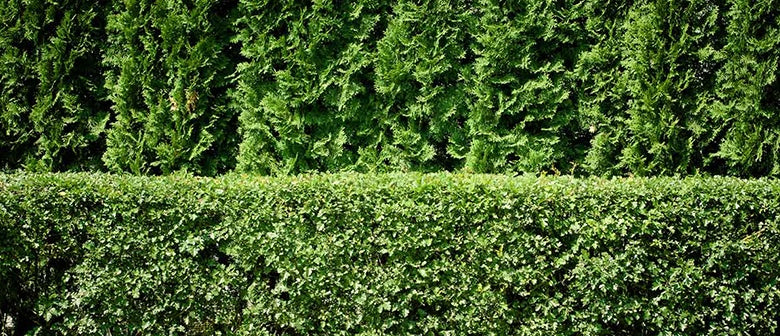Plant screens have loads of purposes, whether you want to create a shady space, an outdoor room, or block out the neighbours. Growing living walls is a great way to increase privacy while boosting your gardens natural beauty.
Here are our top tips for growing a plant privacy screen:
Determine the type of tree that best suits your needs
Evergreens are great for reducing noise and screening all year long. Deciduous trees offer a wider variety of landscaping elements including spring flowers or autumn colors but do not provide a year round screen.
Here are some common New Zealand hedging options:
- bamboo – fast growing
- photinia – can grow up to 2 metres
- michelia figo – great for sound proofing
- camellia – comes in two main varieties – japonica and sasanqua. For hedging and screening, the sasanqua is the preferred choice with its faster growing habit, smaller leaves and better sun tolerance
- eugenia ventenatii (weeping lilly pilly) – one of New Zealand’s favourite hedge trees, this evergreen shrub has glossy green leaves tipped bronze/red on new growth
- griselinia – can be grown at any height and is excellent in coastal gardens, but intolerant of prolonged wet feet and only moderately frost hardy.
Decide how high you would like the screen
Determine how high you want your screen. Put a ladder or have someone stand where you are considering placing the hedge, this will let you visually see how high you want your screen.
Talk to the team at your local Palmers, they can let you know what varieties will best meet your height requirements.
Decide how much width you have available
After figuring out how high you want your hedge, the next step is to determine how much space you have available. If you have a large amount of space you may consider making a double or triple row. If the space is tight you may want to stick with a single row of plants that don’t get too bushy. Planting in rows close together, trees and shrubs will not spread out as wide as if they were a single species in a landscape.
Map out your area
Now that you have decided on the type of plants you are after, map out the area you would like to fence with your plants. You can do this by putting wooden stakes in the ground at each end and tying a string between them. This will make sure you have a straight row or rows.
Get planting
For hedges, it is best to dig a straight trench when planting bare root shrubs. For containerized plants, individual holes work best.
Training your plants
Start training your shrubs after it is established and growing vigorously. Generally this takes 1-2 seasons after planting.
To train as a hedge, trim top and sides a few times per year as necessary, removing about one-half the length of new shoots. Most needled evergreens make their growth early in the season, while most broadleaf evergreens and deciduous plants grow over a longer period of time. Ideal hedge shapes are wider at the base than the top, to allow sunlight to reach the lower leaves.










